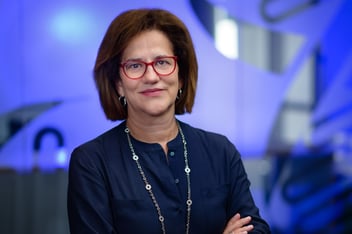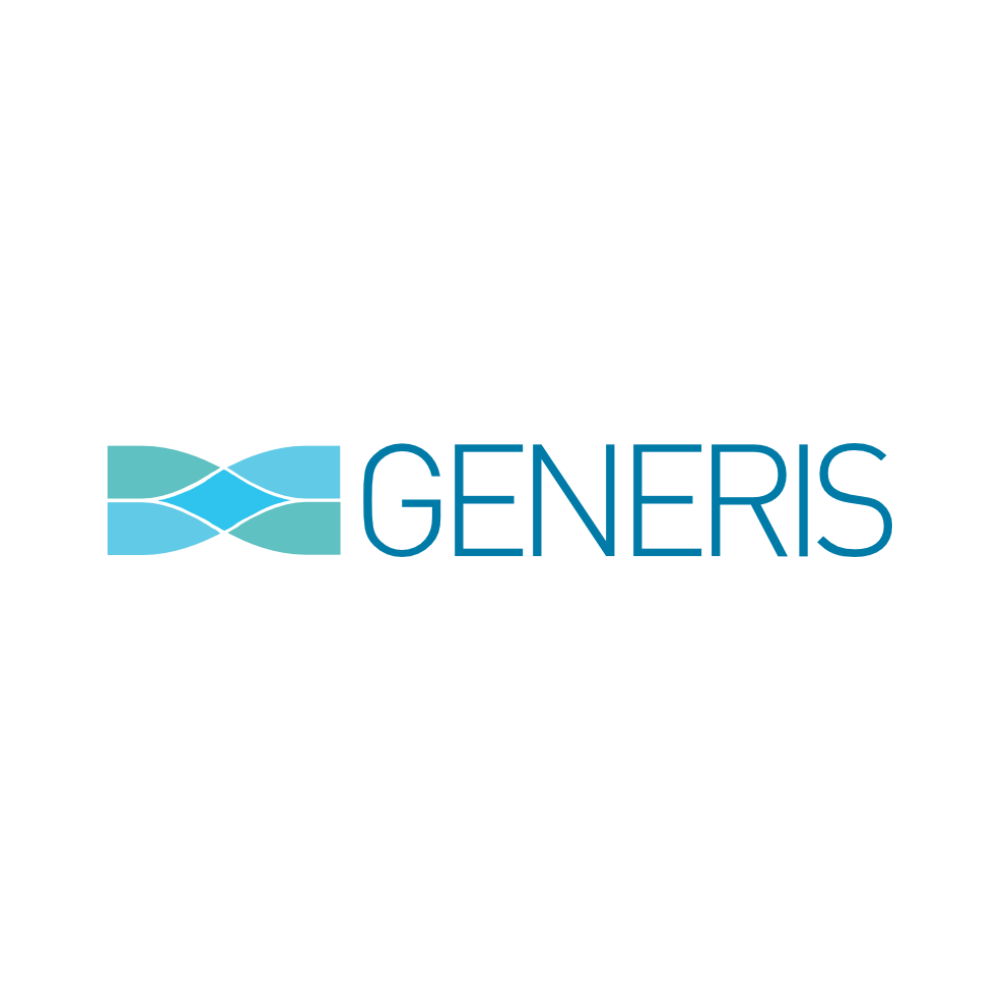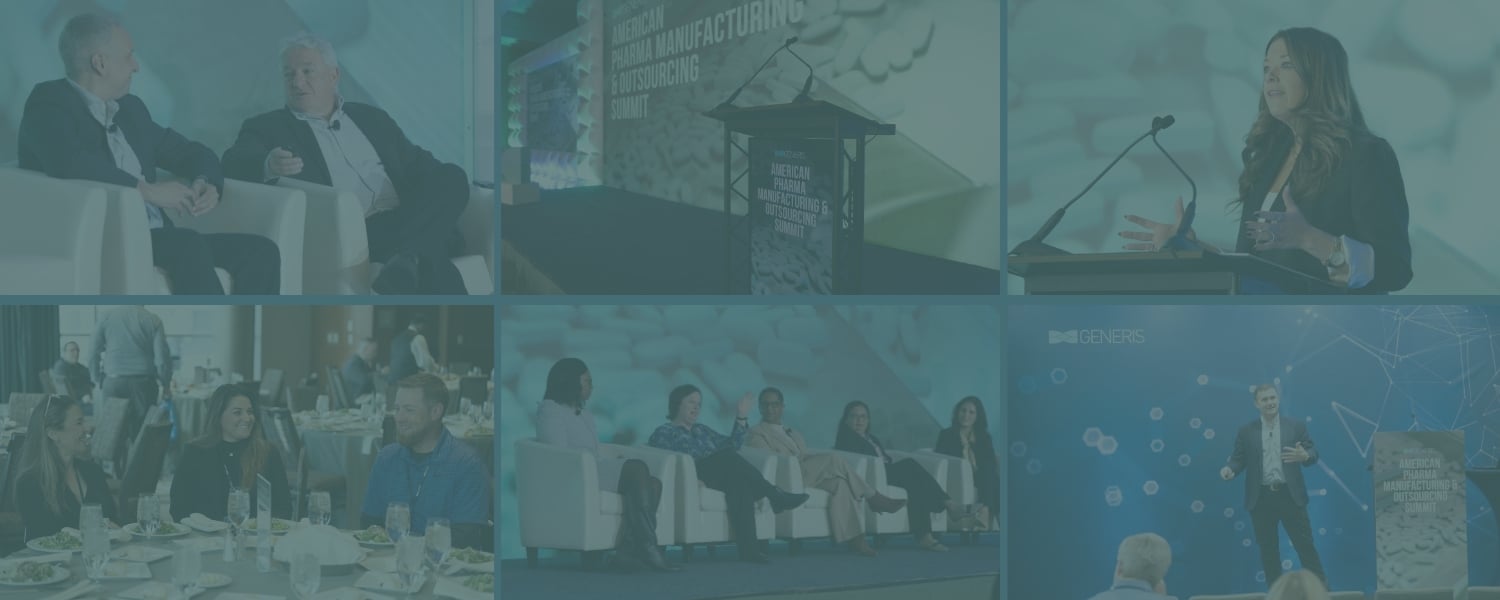"Being open to change and learning has been my North Star in most of my decisions and my career."
In the dynamic landscape of the pharmaceutical industry, women are increasingly working to assume pivotal leadership roles and break any remaining stereotypes surrounding women in leadership. At AstraZeneca, a global powerhouse in biopharmaceuticals, Dafni Bika, Senior Vice President and Global Head Pharmaceutical Technology and Development, stands as a beacon of female leadership, driving transformative change and shaping the company's
strategic direction.
In this interview, we explore Dafni’s remarkable journey as a trailblazer who has defied stereotypes and shattered barriers on her path to senior leadership. With candid reflections and insightful perspectives, Dafni shares the challenges she has faced, the lessons she has learned, and the insightful advice she has as a woman navigating the corporate world.
Her story serves as an inspiration to aspiring female leaders everywhere, illustrating the transformative impact of women in leadership, and the limitless possibilities that arise when the decision to take a significant leap in your career is made.
Read below to discover more into Dafni Bika’s extraordinary career in the pharmaceutical industry.
Thank you, Dafni, for meeting with us. Could you begin with a brief introduction about yourself and your responsibilities in your current position?

I've been in the industry for more than 25 years now, in roles at some of the top tier companies around the world—including Procter and Gamble, Merck and Co, Bristol Myers Squibb, and now AstraZeneca.
I've been fortunate to work at the interface between R&D and commercial manufacturing. I’ve learned from both ends, always with a focus on developing stable and robust quality products by design, meeting the expectations of the patient, and making sure that life-changing medicines are delivered on time, with robust processes to maintain a constant supply through our manufacturing network.
I started my career with Merck at a site in West Point, Pennsylvania, and there I brought a lot of my background as a material scientist and engineer to work for pharmaceutical materials. I learned a lot by doing reverse engineering at the beginning of my career. Then, of course, contributing to the development of new medicines, the scale-up and commercialization of those, and also making sure I support the continuous and uninterrupted supply through the product lifecycle.
What inspired you to start a career in the biopharmaceutical industry?
So of course, there are industry people who are trained either in the medical field or as a pharmacist.
I'm not one of them.
I ended up in pharmaceutical technology and engineering rather by chance, I would say. I was trained as a chemical engineer and material scientist. I completed a Ph.D. program, so I did a lot of research during my early years here in the United States and globally, and later I found the opportunity with Merck and Company. There, I was able to apply much of my knowledge of pharmaceutical materials to help create and scale up more robust formulations. With my understanding of the process, structure of materials and properties, and the chemistry behind this, I was able to contribute and commercialize new medicines, and also help maintain a constant supply of existing marketed medicines.
It was very fulfilling to see everything from beginning to end, from transforming molecules into medicines and making sure we make them available to people as fast as we could. As I progressed throughout my career, I gained more and more responsibility to see all aspects of how we create a medicine, from the initial chemistry for the active ingredient to the formulation and then the actual delivery system, including devices, and how we accelerate these medicines from the benchtop to the hands of patients. With my on-market Science and Technology teams I also had the opportunity to deliver significant productivity and cost savings through continuous process improvements.
Can you explain a little bit about your work leading the development and implementation of continuous manufacturing at AstraZeneca?
As a chemical engineer, I was trained in continuous processes from the very beginning. It was to my great surprise that this industry (with all the deep science and expertise) was not applying continuous manufacturing for many, many years. Batch manufacturing is at the center of how we make medicines. .jpg?width=350&height=197&name=American%20Biomanufacturing%20Summit%20(9).jpg)
But certainly in recent years, the industry has started slowly but steadily moving to more continuous processes, both in manufacturing of the active pharmaceutical ingredient (API), and drug product. This is extremely rewarding because we can make the same amount of materials in a fraction of the footprint, and much faster.
We can now make tablets from powders in 20 minutes, rather than the 20 days it takes sometimes to go through the batch process. We are now able to create this ability to make the product in every part of the world and make this very close to the patients who need the medicines. So again, portability, sustainability, speed, and quality by design are all served well with continuous manufacturing.
I find it very rewarding in my career that I was able to see this through with AstraZeneca, where we have made some significant investments in this area, both for the API and drug products.
We hope to see our first product be launched in about one year from now, using continuous manufacturing and real-time release. This is supported by a great set of digital tools and data including digital twins, Generative AI and machine learning to enhance our technical and business processes. So I’m very, very excited about seeing this technology through from start to finish!
Can you share a little bit about your journey to leadership throughout these roles in the biopharmaceutical industry, particularly highlighting any challenges or barriers you face as a woman?
Everybody's leadership journey is unique, right?
In my case, it started with a very, very strong technical orientation and being excellent at what I was doing as a technical contributor to projects and teams. Fairly in the middle, of my career, I kind of shifted towards director-level positions, where I used a lot more of my leadership and managerial skills to lead others through strong technical performance.
When I became more aware of what worked best, my leadership developed along with the different opportunities I had around the world and support from some brilliant managers.
Key elements of this included the foundation of strong technical understanding and contributions, being able to engage others, connect and collaborate across different areas of these large organizations, and eventually become savvier on how to navigate my career in these big organizations and how to manage at scale. That's where my leadership and technical expertise work together to inspire others to follow me, but also to create that kind of influence and trust in my leadership to be fortunate to be asked to lead larger parts of the organization.
I've always been in STEM and STEM-related activities across the company, and my leadership evolved by gaining more business acumen. I was fortunate to have very strong mentors along the way, work with people inside our industry and outside, as well to understand leadership, expectations, and also the business side of things, which all complemented my technical expertise.
What I would say was very, very helpful for me is the network of people that I met throughout my career, and in different parts of the world.
I was fortunate to work on both sides of the Atlantic Ocean, both in the US and Europe for periods of time, and create a quite significant network with people I met along the journey. Maintaining those relationships was always very, very valuable throughout my career.
I took some risks, of course.
I am resilient and open to change, so that helped me through this journey. I made decisions to change companies and teams and do different things within the areas I supported, which all helped my development and advancement in those companies.
"In my career, I had very influential and very inspiring managers - both men and women - but seeing women in my report lines truly made the difference for me."
Can you offer a little advice to any aspiring female leaders who are looking to break into or advance within the biomanufacturing field?
You have to want this leadership exposure and being in the spotlight is a decision.
It's a choice, right? A lot of women may delay doing this because of family or other reasons.
I took a much slower pace at the beginning of my career to have a family. As a mother of three and a spouse, I had to learn how to master my priorities and time. Keeping my family strong and together has always been my priority.
.jpg?width=378&height=251&name=American%20Biomanufacturing%20Summit%20(13).jpg) So, at the beginning of my career, I tried to balance this better. I took jobs that allowed me to be in one location rather than traveling. Even though I changed geographies, I always had my nuclear family with me and I received a lot of support from my extended family.
So, at the beginning of my career, I tried to balance this better. I took jobs that allowed me to be in one location rather than traveling. Even though I changed geographies, I always had my nuclear family with me and I received a lot of support from my extended family.
But it's important to understand that the right time for each and every one of us might be different when it comes to focusing on family versus career. When I was able to focus more on my career, that's when things started happening. It was a very conscious decision that it was the time for me to push forward, and that became the priority and that focus helped.
I had to take risks and rely quite a bit on my network and mentors to be able to manage through family, work, travels, and global assignments. It really takes a village!
I would say what helped my career, which might not be true for everybody else, is taking the risk to move. I changed locations and companies several times throughout my career. That mobility paid off, being very rewarding for me because I like that kind of change, exposure to different cultures, and engaging with different people. It also gave me a lot of experience from hands-on engineering and development in the lab, to managing big teams globally and remotely. I was able to do some of my best work even during the pandemic because of our ability to connect across geography and understand the different cultures that were involved in my team and also more broadly in the companies I work for.
Being open to change and learning has been my North Star in most of my decisions and my career.
Looking ahead a little bit, what trends or changes do you hope to see in terms of women's representation and leadership opportunities within the biopharmaceutical industry?
This is a great question, especially this week when we celebrate International Women's Day on March 8th.
I have two daughters, and I would like to see them grow as individuals and as independent women in their careers. So, we still have a lot to do. We've made a lot of progress on gender equity and parity within AstraZeneca, but if I take the CEOs of the S&P 500 companies, the percentage of women CEOs is still 7%.
If we go to the next level and look at how much representation we have of women on the Boards of Directors of these S&P 500 companies, again it's about 30%. I would like to see more women in all aspects and all levels.
So while we've made significant progress, we still need to invest more to strive for more equity in the workplace and more parity in gender representation, especially in areas like STEM. With STEM, we start representation a little lower than 50% as we get out of school, and this number comes down to 30% very early into our careers.
Within AstraZeneca, I always try to support programs that help women through these early stages in their careers and help them grow their careers to reach their leadership potential. In particular, I like help them onboard when they come back from maternity leave. This has now extended to men who also want to take paternity leave and come back to the workplace as very productive members of the team. This change takes effort, and it will continue to require all of us to look at the numbers, to look at the benefits that this kind of parity brings to our workplace, supporting both men and women in the end.
It's not just about helping the numbers with women's representation, it also helps bring the true diversity we would like to see in our workplace - which helps our business create more inclusive environments and better business outcomes.
How has women's representation and leadership changed since you started your career?
It has increased and progressed in a very positive way. I remember when I first graduated from school, in my job assignments, I was the only woman.
In meetings or across teams, I did a lot of work with the suppliers of production and process equipment. I would say being a female engineer in a male-dominated environment made an even stronger impression on me of how we need to change, because I had a lot of women friends who were equally capable and were looking for opportunities. Certainly today, they can find many more jobs that are easily aligned with their talents, expectations, and ambitions. So it has changed in a very good way and continues to improve at a steady pace. .jpg?width=349&height=233&name=American%20Biomanufacturing%20Summit%20(12).jpg)
In my career, I had very influential and very inspiring managers - both men and women - but seeing women in my report lines truly made the difference for me. I had a lot of support from them and I learned a lot as I was fortunate enough to have wonderful role models. I still have women leaders in my field and engineering in general which have been very helpful, inspiring, and encouraging for me.
At the end of the day, it is important to see that we can make a difference by bringing a unique leadership style to the workplace. Without generalizing, women leaders tend to be collaborative, compassionate and focused on getting things done.
There has been lots of progress, but I hope to see even more in the future.
We want to extend a heartfelt thank you to Dafni for taking the time to share her inspiring insights with us. Advocating and influencing change in such a powerful industry is never an easy feat, so we are looking forward to seeing the increasing progress of the industry in the upcoming years.
If you want to hear more from Dafni, join us at the 10th Annual American Biomanufacturing Summit. Dafni will be joining our Women in Leadership panel alongside other inspiring and influential women, and we look forward to hearing more of their stories. You can learn more about AstraZeneca’s global operations, manufacturing and supply here.
-------------------------------------------------------------------------------------------------------------------------------------------------------------------------------------------------------------
If you enjoyed this content, subscribe so you never miss a blog!
%20(1).png?width=773&height=112&name=Generis%20Logo%20full%20Colour%20(Large)%20(1).png)


-Nov-13-2025-01-18-02-9699-PM.png)
-2.png)